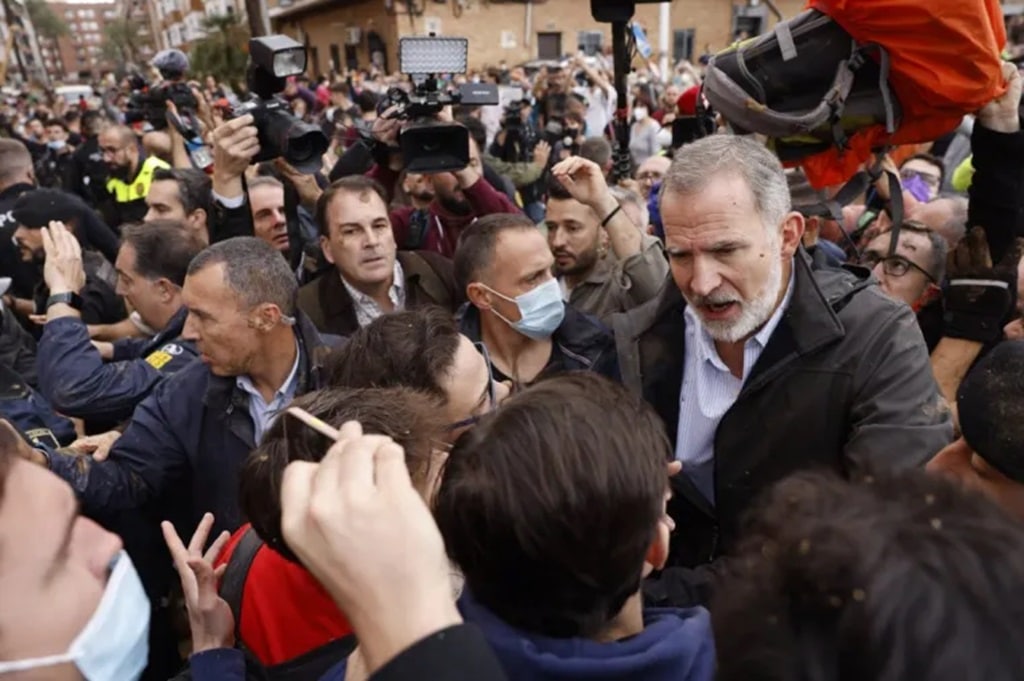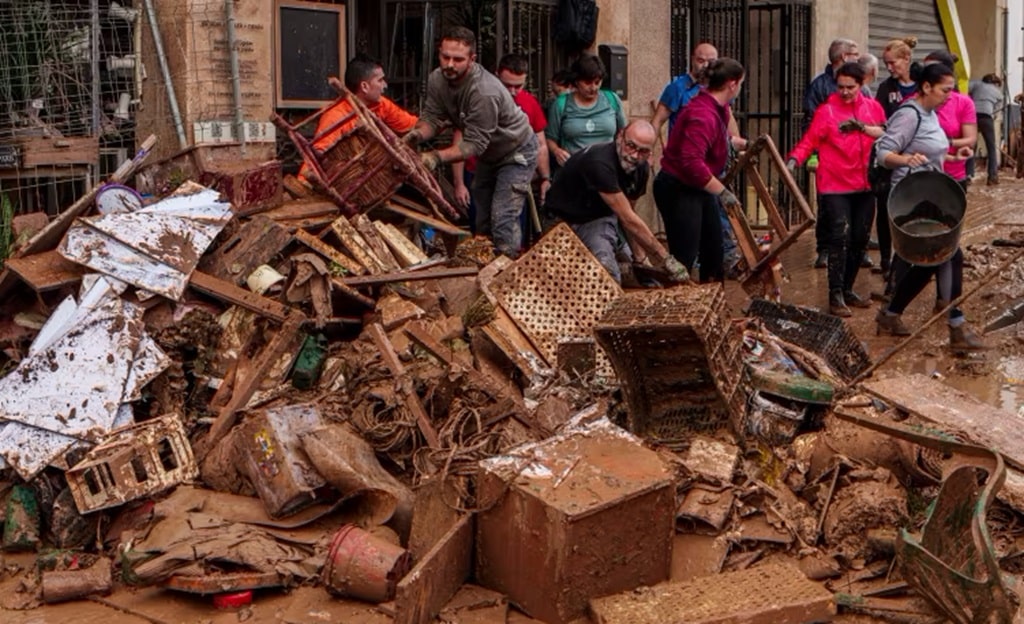World
Companies Are Crafting New Ways To Grow Cocoa, And Chocolate Alternatives, To Keep Up With Demand

West Sacramento, California – Climate change is straining the rainforests where the very sensitive cocoa bean grows, but chocolate lovers should not be concerned, according to companies investigating alternative cocoa cultivation methods or developing cocoa alternatives.
Scientists and entrepreneurs are experimenting with ways to produce more cocoa far beyond the tropics, from Northern California to Israel.
California Cultured, a plant cell culture startup, is producing chocolate from cell cultures at a facility in West Sacramento, California, with hopes of beginning selling the product next year. According to Alan Perlstein, the company’s CEO, it places cocoa bean cells in a vat of sugar water, allowing them to reproduce swiftly and mature in a week rather than the six to eight months required for a typical harvest. The procedure also requires less water and labor.
“We see just the demand of chocolate monstrously outstripping what is going to be available,” Perlstein observed. “There’s really no other way that we see that the world could significantly increase the supply of cocoa or still keep it at affordable levels without extensive either environmental degradation or some significant other cost.”
Cocoa trees grow approximately 20 degrees north and south of the equator in areas with warm weather and plenty of rain, such as West Africa and South America. However, climate change is projected to dry out the soil due to increased heat. To fulfill demand, scientists, entrepreneurs, and chocolate lovers are developing new ways to grow cocoa, make it more durable and pest-resistant, and craft chocolatey-tasting cocoa alternatives.
Companies Are Crafting New Ways To Grow Cocoa, And Chocolate Alternatives, To Keep Up With Demand
According to the National Confectioners Association, sales of chocolate in the United States will exceed $25 billion by 2023. Many entrepreneurs believe that demand for cocoa will outpace supply. Companies are considering either increasing supply with cell-based cocoa or providing alternatives produced from items ranging from oats to carbs that have been roasted and flavored to give a chocolaty flavor for chips or filling.
Cocoa prices increased earlier this year due to high demand and crop problems in West Africa caused by plant disease and weather fluctuations. The region produces the vast majority of the world’s cocoa.
“All of this contributes to a potential supply disruption, so it is appealing to these lab-grown or cocoa substitute companies to think of ways to replace that ingredient that we know as chocolatey-flavored,” said Carla D. Martin, executive director of the Fine Cacao and Chocolate Institute and a lecturer in African and African American Studies at Harvard University.
Martin explained that demand for chocolate in the United States and Europe is driving the innovation. While West and Central Africa produce three-quarters of the world’s cocoa, only 4% is consumed there.
The attempt to grow cocoa inside the United States follows the growth of other items, such as chicken meat, in labs. It also comes as supermarket shelves fill with new food options, which makers of cocoa substitutes say demonstrates that people are willing to try something that looks and tastes like a chocolate chip cookie, even if the chip contains a cocoa substitute.
They also claimed they hope to capitalize on consumers’ growing awareness of where their food originates and what it takes to grow it, including the exploitation of child labor in the chocolate sector.
Planet A Foods in Planegg, Germany, claims that the taste of mass-market chocolate is primarily derived from the fermenting and roasting processes used in its production rather than the cocoa bean. According to Jessica Karch, a company representative, the founders evaluated a variety of ingredients, ranging from olives to seaweed, before settling on a combination of oats and sunflower seeds as the finest-tasting chocolate replacement. It’s called “ChoViva” and may be substituted in baked items, she claimed.
“The idea is not to replace the high quality, 80% dark chocolate, but really to have a lot of different products in the mass market,” Karch told CNN.
While some are developing alternative cocoa sources and substitutes, others are attempting to increase the supply of cocoa, where it grows naturally. Mars, which makes M&Ms and Snickers, has a research lab at the University of California, Davis, that aims to make cocoa plants more resilient, according to Joanna Hwu, the company’s senior director of cocoa plant science. The facility houses a living collection of cocoa trees so scientists can investigate what makes them disease-resistant, assist farmers in producing countries, and ensure a consistent supply of beans.
“We see it as an opportunity, and our responsibility,” Hwu went on.
Companies Are Crafting New Ways To Grow Cocoa, And Chocolate Alternatives, To Keep Up With Demand
In Israel, attempts to increase cocoa supplies are also underway. Hanne Volpin, the co-founder of Celeste Bio, explained that the company grows cocoa bean cells indoors to generate cocoa powder and butter. In a few years, the company hopes to be able to produce cocoa regardless of the effects of climate change and illness – an attempt that has piqued the interest of Mondelez, the creator of Cadbury chocolate.
“We only have a small field, but eventually, we will have a farm of bioreactors,” Volpin told me.
This is comparable to the effort underway at California Cultured, which intends to seek authorization from the United States Food and Drug Administration to label their product chocolate because, according to Perlstein, that is what it is.
It may be referred to as brewery chocolate or local chocolate, but it is still chocolate, he explained, because it is genetically identical despite not being collected from a tree.
“We basically see that we’re growing cocoa — just in a different way,” Perlstein told Reuters.
SOURCE | AP
World
Australia to Ban Children Under 16 from Social Media

To safeguard the mental health of young people, Prime Minister Anthony Albanese has declared that children under 16 will be prohibited from using social media. The corporations involved will be obligated to enforce the new regulations or risk incurring penalties.
On Thursday, Albanese told reporters in Canberra, “Social media is causing harm to our children, and I am putting an end to it.” Later this month, she plans to introduce legislation.
“It will be the responsibility of social media platforms to demonstrate that they are taking reasonable measures to prevent access.” Parents and adolescents will not be accountable. Users will not be subject to any penalties.
Albanese’s center-left Labor government has implemented a series of measures to address the issue of technology titans, which the prime minister attributes to a rise in mental health issues and misinformation. One of these measures is the long-awaited age limit.
Australia has a history of challenging large technology companies that operate social media platforms, such as a 2021 initiative to compel Facebook and Google to pay for news content.
X, which billionaire Elon Musk owns, was recently taken to court by the government for failing to remove a recording of a terrorist attack in Sydney. It has also imposed a fine on the company for neglecting to remove content that depicts child sexual abuse.
Related News:
Alex Jones Fighting Attempt To Sell His Social Media Account Rights
2024 | Alex Jones Fighting Attempt To Sell His Social Media Account Rights In Infowars Auction
World
Felipe VI of Spain Pelted with Mud By Angry Protesters

Angry protesters pelted Felipe VI of Spain with mud and other objects during a visit to flood-hit Valencia. Spain’s national broadcaster reported that two bodyguards were treated for injuries.
Felipe VI of Spain and Queen Letizia, Spain’s prime minister, and other leaders were met with shouts of “murderer” and “shame” as they traversed the town of Paiporta, which is one of the most severely afflicted in the region.
King Felipe and Queen Letizia were later observed offering comfort to individuals in the throng despite being covered in mud on their faces and clothing.
The floods, which were the most severe in Spain in decades, resulted in the deaths of over 200 individuals. In the hopes of locating survivors and recovering corpses, emergency personnel are still working to search underground car parks and tunnels.
In response to the floods, there has been a wave of resentment toward the authorities for their perceived failure to provide adequate support and warning.
The king was observed walking down a pedestrian street when a sudden surge of demonstrators who hurled insults and screamed, causing his bodyguards and police to be immediately overwhelmed.
Some of the demonstrators threw mud and objects, which made it difficult for them to maintain a protective ring around the monarch.

Angry flood survivors hurl mud and insults at Spain’s King Felipe VI during Valencia visit.
Felipe VI of Spain Greets Mob
Images depicted the king, queen, and entourage, who held canopies over the monarch as they departed, with mud on their faces and clothing.
During the visit, the royal couple was accompanied by Spain’s Prime Minister Pedro Sánchez and the president of the Valencian regional government, Carlos Mazón. However, they were promptly evacuated as the crowd became increasingly hostile.
The BBC has verified footage that appears to depict stones being thrown at Sánchez’s vehicle as he was driven away, while Spanish media reports that objects were hurled at him.
The audience chanted, “Where is Sánchez?” after he departed.
“I am only 16,” Pau said, his eyes welling with tears. “We are assisting, but the leaders are not acting.” People are still dying. I am unable to endure this any longer.
Another woman stated, “They abandoned us to our deaths.” We have forfeited everything: our homes, enterprises, and aspirations.
A subsequent observation revealed that the civil guard and mounted officers endeavored to disperse the irate throng.

People clean mud from a shop affected by floods in Valencia, Spain.
Severe Flooding in Valencia province
The royal entourage intended to continue their journey to Chiva, another community in the Valencia province severely affected by the flooding. However, this visit has been postponed.
In a subsequent video on the royal household’s Instagram account, the monarch expressed his comprehension of the protestors’ “angry and frustration.”
Maribel Albalat, the mayor of Paiporta, said that she was astonished by the violence but also acknowledged the “frustration and desperation of the people.”
Juan Bordera, a Valencian parliamentarian, characterized the king’s visit as “an extremely poor decision.”
Mr. Bordera told the BBC authorities “didn’t heed any warnings.”
“It is logical that the people are angry, and it is logical that the people did not comprehend the urgency of this visit,” he continued.
Sánchez directed the deployment of 10,000 additional police officers, civil guards, and soldiers to the region on Saturday.
He stated that the deployment was the highest in Spain’s history during peacetime. However, he also acknowledged that the response was “insufficient” and that there were “severe issues and shortages.”

Spain searches for bodies after unprecedented flooding claims at least 200 lives.
Over 200 Killed in Flooding
The inundation began on Tuesday following a period of heavy rainfall. Floodwaters caused bridges to collapse and cities to be engulfed in a thick layer of mud. Numerous communities lacked water, electricity, food, and other fundamental services.
The mortality toll from the flooding reached 217 on Sunday, and it is believed that many more individuals are still missing.
The Valencia region on the Mediterranean coast has been the site of nearly all of the confirmed fatalities thus far.
Certain regions have been particularly devastated. Today, the royal delegation visited Paiporta, a municipality where authorities have reported a minimum of 62 fatalities.
On Sunday, the Spanish meteorological agency AEMET issued the maximum alert level for certain areas of southern Valencia, including Alzira, Cullera, and Gandia.
The agency warned that the intensity of the cyclones expected to pass through the region will not be comparable to Tuesday’s. It anticipates a total of 90mm (3.45 inches) of precipitation.
Trending News:
At Least 95 People Die In Flash Floods In Spain
World
Oil Prices Fall As Reality Of Weak Global Demand Overtakes Risk Of Wider War In Middle East

Global oil prices are plummeting after Israel launched a retaliatory strike over the weekend that targeted Iranian military locations rather than its energy infrastructure, as had been anticipated.
Crude oil prices rose globally on October 2 after Iran launched roughly 200 missiles into Israel as part of a series of fast-increasing attacks between Israel, Iran, and its Arab allies that threatened to bring the Middle East closer to a regional war.
Iran is the world’s seventh-largest oil producer, but a bigger crisis in the Middle East may have an impact on the region’s largest energy producers.
Oil Prices Fall As Reality Of Weak Global Demand Overtakes Risk Of Wider War In Middle East
With many believing that the threat is receding in the short term, the price of benchmark U.S. crude and Brent crude, the worldwide benchmark, fell 6% on Monday. U.S. crude oil plunged well below $70 per barrel.
The Israeli military stated that its aircraft targeted Iranian facilities used to manufacture missiles fired at Israel, as well as surface-to-air missile installations.
Here’s a look at the current status and prospects for oil and gas prices:
The price of U.S. benchmark petroleum fell 6% Monday after Israel’s weekend retaliation strike on Iran targeted military targets rather than oilfields in the world’s seventh largest producer of crude.
This brings the price of a barrel of U.S. crude well below $70 after it rose above $77 earlier this month. Oil and gasoline prices have fallen dramatically since their yearly highs in April. According to energy specialists, more than half of the pumps in the United States sell a gallon of petrol for less than $3.
The focus has shifted back to the fundamentals of global energy markets, which have seen plentiful supply and falling demand this year. Slowing economic growth in China, the world’s largest energy consumer is a major cause.
Beijing announced that China’s economy grew at a 4.6% annual rate in the July-September quarter, down from 4.7% the previous quarter and falling short of the official aim of “about 5%” growth in 2024.
The Middle East war continues to roil energy markets, albeit not as dramatically.
Prices spiked momentarily this month after Iran launched missiles into Israel, but many experts believe Israel’s response over the weekend was moderate, potentially ending a cycle of retaliatory strikes from both sides, at least for now.
The OPEC+ coalition, which includes members of the producer’s cartel as well as ally countries such as Russia, wields less control over world pricing than in the 1970s when an oil embargo following the start of the Yom Kippur War in 1973 doubled crude oil prices.
Since then, the global oil supply has shifted dramatically, with the United States emerging as the world’s top producer. Months of conflict between Israel and two Iranian proxies, Hamas and Hezbollah, did little to raise oil prices for OPEC and its 12 member countries. Only the prospect of a direct conflict between Israel and Iran shifted the needle.
It is the fundamentals.
The long-term expectation is that oil prices will fall rather than rise. This is due to a shift in the supply-demand balance, which normally causes oil prices to fall.
According to the International Energy Agency’s most recent energy market assessment, oil demand in the first half of this year increased by the least amount since 2020. Meanwhile, supplies have continued to rise, and the OPEC+ alliance has announced intentions to release more oil into the market beginning in December.
What’s happening with energy prices this year?
Oil futures soared sharply to start the year, reaching $85 per barrel in April, but it’s been mostly downhill since then, and gas prices have followed suit.
Because oil costs half of a gallon of gasoline in the United States, gas prices are loosely correlated. Between Friday and Monday, when Israel conducted a measured counterstrike against Iran, the price of a barrel of oil fell $4.
OPEC has failed to build a floor for oil prices this year.
Oil Prices Fall As Reality Of Weak Global Demand Overtakes Risk Of Wider War In Middle East
Saudi Arabia and other oil-producing countries extended output cutbacks until June next year, seeking to preserve low oil prices that have yet to recover despite Middle Eastern turbulence and this year’s summer travel season.
At the same time, the United States is pumping an unprecedented amount of petroleum. The United States Energy Information Administration predicts that the average daily crude oil output in the United States will be 13.2 million barrels annually, with production only expected to increase in 2025.
What’s next for oil and gas prices?
Several energy experts believe that oil prices have peaked this year and will continue to fall, implying that motorists will benefit from additional discounts.
“Limited nature of Israeli strikes against Iran should diminish fears of wider war and shave some of the geopolitical premium on crude oil,” said Tom Kloza, global head of energy analysis at the Oil Price Information Service, in a social media post this weekend. “Today’s U.S. retail gas avg is $3.13/gal with 55% of sites priced at less than $3/gal.”
SOURCE | AP
-
Tech4 weeks ago
Documents Show OpenAI’s From Nonprofit to $157B Valued Company Long Trip
-
Business4 weeks ago
Experts Are Perplexed By Tesla’s Sporty, Two-Seater Robotaxi Design.
-
Tech2 weeks ago
Apple Unveiled A Fresh Glimpse Of Their AI Featuring ChatGPT Integration.
-
Tech3 weeks ago
Connection Problems With The App Store Are Stopping Customers From Downloading Apps.
-
Business4 weeks ago
Uber And Lyft Stock Prices Surge After Telsa’s “Toothless” Robotaxi Revelation.
-
Tech4 weeks ago
Documents Show OpenAI’s Long Journey From Nonprofit To $157B Valued Company





































